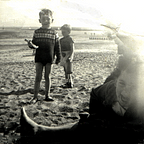How did George Harrison learn to play the guitar?
A painful struggle with a ‘cheapo, a horrible little guitar’
The first guitar George ever saw was a Gibson belonged an American country & western artist, Slim Whitman. He began noticing the different models other stars used: Django Reinhardt’s acoustic Selmer-Maccaferri, for example.
Closer to home, the comedian George Formby played a ukulele. These objects of wonder would appear randomly in magazines or be occasionally glimpsed during live performances on TV.
At school there were music lessons but no guitars — George spent his class time drawing them from memory. Nor was the instrument played by any of his relatives. His mother, Louise, sang at the top of his voice around the house: show tunes, mainly. George’s father, Harold Harrison, was a country fan. The Jimmy Rodgers song, Waiting for a Train was constantly playing on the family gramophone.
These proved to be lasting influences. But no adolescent has their musical tastes entirely defined by their parents. As with the other future Beatles, George’s moment of teenage epiphany came out of Memphis, Tennessee.
He was cycling past a neighbour’s house when he heard Heartbreak Hotel playing on the radio. George got off to listen, intoxicated by this new sound. The ‘lonely street’ Elvis sang of seemed to promise a whole new world away — one a long way from 25 Upton Green, Speke
First Guitar
As with Ringo, George owed his first instrument to a spell on the children’s ward. The then thirteen-year-old had been admitted to hospital with a kidney problem. This thankfully proved minor but to help with his son’s recuperation , Harold agreed to buy an old classmate’s Dutch Egmond flat-top acoustic guitar.
What George would later describe as a ‘cheapo, a horrible little guitar’ had a selling price of £3 ($4). This was a large sum for a poorly paid bus driver, though it would prove an inspired long-term investment. In 2003 it was sold for $800,000 at auction.
Progression
The Egmond proved very difficult to master, partly because of its less than ergonomic design. His mother, Louise, observed.
George tried to teach himself [the guitar]. But he wasn’t making much headway. ‘I’ll never learn this,’ he used to say. I said, ‘You will, son, you will. Just keep at it.’
Early progress was also hampered by an ill advised experiment. Curious to see how the guitar was engineered, George unscrewed the head — and was unable to fix it back on. It remained abandoned in cupboard in two pieces until his brother managed to put it back together. Even then it was warped
For all his passion for the instrument, George was no prodigy. Thirteen was a relatively late age to start learning from scratch, especially without formal tuition — and his progress was painfully slow. His method — later repeated when learning the sitar — came down to careful imitation and relentless practice.
With characteristic doggedness, George stuck to the task until his fingers bled from the effort. A family friend then showed him some basic chords. Once he had these memorised, he moved onto a Spanish guitar manual Modern Guitar Chord Progressions.
Slowly but surely he inched forward.
